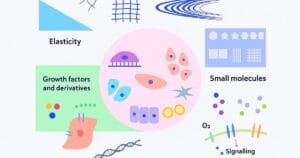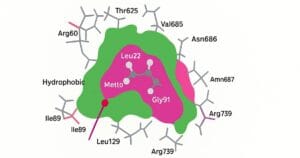
COMPETITIVE EXAM MCQs SERIES of ENVIRONMENTAL SCIENCE for UGC-NET/JRF, SLET, ARS, GATE, and other entrance tests – Approaches to the Development of Environmental Models.
Syllabus Outline
- Empirical models: statistical and data-driven methods using regression, time series analysis, machine learning, and neural networks.
- Mechanistic models: process-based mathematical models using differential equations, mass balance, and transport phenomena.
- Hybrid models: integration of empirical and mechanistic approaches.
- Model development framework from conceptualisation and problem definition through mathematical formulation, implementation, and validation.
- Modelling applications across water quality (surface and groundwater models), air quality (atmospheric dispersion and emission models), ecological systems (population and ecosystem models), and climate modelling (meteorological and climate change models).
- Model validation using statistical performance metrics.
- Spatial modelling with GIS integration, temporal modelling with dynamic and stochastic approaches, and multi-scale modelling concepts.
This quiz contains concept-based, the most frequently asked 25 MCQs of “Approaches to the Development of Environmental Models”. Each question has a single correct/most appropriate answer.
*****
1. Which of the following best describes empirical models in environmental science?
A) Models based on first principles and physical laws
B) Models based on statistical relationships derived from observed data
C) Models that combine theoretical and observational approaches
D) Models that use only laboratory experimental data
2. In time series analysis for environmental modelling, autocorrelation refers to:
A) Correlation between different variables
B) Correlation between a variable and its past values
C) Correlation between model predictions and observations
D) Correlation between spatial locations
3. The Gaussian plume model is primarily used for:
A) Water quality modelling
B) Ecological population modelling
C) Atmospheric dispersion modelling
D) Climate change modelling
4. Neural networks in environmental modelling are classified as:
A) Mechanistic models
B) Empirical models
C) Hybrid models
D) Deterministic models
5. When applying machine learning algorithms for air quality prediction, the most critical preprocessing step is:
A) Removing all missing data points
B) Feature selection and data normalisation
C) Converting all variables to categorical data
D) Using only linear relationships
6. In ecosystem modelling, the Lotka-Volterra equations are used to describe:
A) Nutrient cycling processes
B) Predator-prey interactions
C) Energy flow in food webs
D) Species migration patterns
7. The uncertainty analysis in environmental models should consider:
I – Parameter uncertainty
II – Model structure uncertainty
III – Input data uncertainty
IV – Output data uncertainty
A) I only
B) I and II
C) IV only
D) I, II and III
8. The application of fuzzy logic in environmental modelling is most beneficial when:
A) Dealing with precise quantitative data
B) Handling uncertainty and imprecise information
C) Modelling linear relationships only
D) Working with large datasets exclusively
9. Which is the main objective of the sensitivity analysis in environmental models?
A) Identify the most influential parameters
B) Reduce computational time
C) Eliminate model uncertainty
D) Decrease model complexity
10. In ecological modelling, carrying capacity represents:
A) The maximum growth rate of a population that can be sustained by the environment
B) Minimum viable population size to sustain the environment
C) Maximum population size that can be sustained by the environment
D) Minimum rate of species extinction that can be sustained by the environment
11. The transport phenomena in environmental systems include:
I – Advection, II – Diffusion, III – Dispersion, and IV – Chemical reactions
A) I and II
B) I and III
C) I, II and III
D) IV only
12. Validation of environmental models using independent datasets is important because:
A) It reduces model complexity
B) It tests model performance on unseen data
C) It eliminates the need for calibration
D) It increases computational efficiency
13. When developing a regional air quality model that integrates emissions from multiple sectors, the treatment of non-linear photochemical reactions requires:
A) Linear approximation methods for computational efficiency
B) Detailed chemical kinetic mechanisms with appropriate operator splitting techniques
C) Empirical relationships based on simple correlations
D) Steady-state assumptions for all chemical species
14. In ecosystem modelling, the paradox of enrichment refers to:
A) Increased nutrient input always leads to higher biodiversity
B) The destabilising effect of increased carrying capacity on predator-prey dynamics
C) Enhanced productivity resulting in ecosystem collapse
D) The positive correlation between species richness and nutrient availability
15. In developing a biogeochemical model for carbon cycling in forest ecosystems, the most critical process representation involves:
I – Above-ground biomass dynamics
II – Coupled plant-soil interactions including root dynamics, mycorrhizal associations, and soil organic matter decomposition
III -Steady-state assumptions for all carbon pools
IV – NDVI dynamics
A) I only
B) I and II
C) I, II and III
D) IV only
16. In urban air quality modelling, the treatment of street canyon effects necessitates:
A) Using regional-scale models to incorporate all environmental and socioeconomic factors
B) Incorporating computational fluid dynamics approaches to capture local-scale flow patterns and pollutant dispersion
C) Applying Gaussian dispersion formulations to understand the dispersion of air pollutants and to estimate source concentration.
D) Considering the effects of population density on the concentration of air pollution and its dispersion.
17. The application of Bayesian approaches in environmental model calibration provides:
I – Point estimates of parameters
II – Probabilistic characterisation of parameter uncertainty
III – Model predictions while incorporating prior knowledge
IV – Deterministic solutions without uncertainty quantification
A) I only
B) I and II
C) II and III
D) I, II, III and IV
18. Recent advances in incorporating artificial intelligence with process-based models (AI-guided mechanistic modelling) in environmental science have demonstrated that:
A) AI replaces the need for a mechanistic model in environmental research
B) Hybrid AI-mechanistic frameworks can improve model performance
C) Traditional Mechanistic models are reliable in environmental research than AI-guided mechanistic models due to output uncertainty.
D) AI-guided mechanistic modelling can work without input data by using pre-processed data in environmental modelling
19. Assertion (A): Multi-physics coupling in environmental models, such as linking hydrodynamics with biogeochemistry and sediment transport, improves predictive capability for complex environmental systems.
Reason (R): Contemporary environmental challenges require an understanding of interdependent processes that operate across multiple temporal and spatial scales.
A) Both A and R are correct, and R is the correct explanation of A
B) Both A and R are correct, but R is not the correct explanation of A
C) A is correct, but R is incorrect
D) A is incorrect, but R is correct
20. Recent developments in “physics-informed neural networks” (PINNs) for environmental modelling represent:
A) AI-driven neural networks that incorporate physical laws
B) Machine learning architectures that incorporate physical laws
C) Statistical methods that incorporate physical laws
D) Mechanical network that incorporates physical laws
21. Which of the following statistical approaches is most commonly used to identify relationships between environmental variables?
A) Principal Component Analysis
B) Regression Analysis
C) Time Series Analysis
D) Monte Carlo Simulation
22. In environmental modelling, the purpose of using a Monte Carlo simulation is to:
A) Simplify the model structure
B) Minimise data redundancy
C) Account for uncertainty and variability
D) Remove autocorrelation
23. A key assumption in linear regression models used in environmental data analysis is:
A) Data are non-parametric
B) Residuals are normally distributed and independent
C) Variables have no causal relationship
D) Inputs are binary
24. Which of the following techniques is suitable for dimensionality reduction in multivariate environmental datasets?
A) Cluster Analysis
B) Decision Trees
C) Principal Component Analysis
D) Logistic Regression
25. When applying logistic regression in environmental risk modelling, the dependent variable is typically:
A) A continuous variable
B) A categorical variable with more than 2 classes
C) A binary variable (e.g., presence/absence)
D) A time-dependent variable
*****
Previous: Statistical Significance and Confidence Limits
Next: Models of Population Growth and Interactions
References
- Gupta, S.P. (2020) Statistical Methods, Sultan Chand & Sons, 44th edition.
- Barnett, V. (2004) Environmental Statistics: Methods and Applications, Wiley, 1st edition.
- Manly, B.F.J. (2008) Statistics for Environmental Science and Management, Chapman and Hall/CRC, 2nd edition.
- Odum, E. P. & Barrett, G. W. (2005) Fundamentals of Ecology, Cengage Learning India, 5th Edition.

